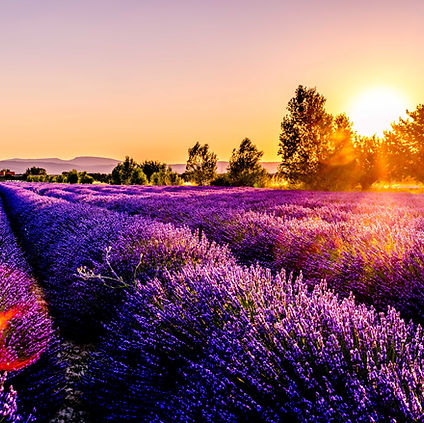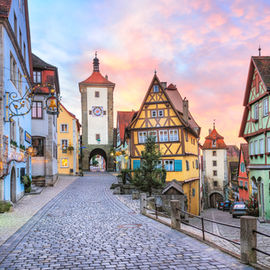
Dreamworthy Destinations
RIVER CRUISING
IN EUROPE
You’re no stranger to Europe. You’ve visited the most popular cities, perhaps even cruised around Italy and the Greek Isles. Now, you’re looking for something more in-depth and culturally focused. Many of your friends have taken a river cruise and come back raving about the wonderful time they had. They even recommended you go as well. So here you are.
So where do you start?
Deciding which river you would like to experience is a great starting point.
Here’s a quick rundown on what you can expect on each river:
RHINE
Flowing northward from the Alps in Switzerland to the North Sea, the Rhine is home to the highest density of castles in Europe. It flows through at least four European countries: Switzerland, Austria, Germany, Liechtenstein, France, and the Netherlands. Most routes sail between Amsterdam and Basel while others include the tributaries of the rivers Main and Moselle.
This is a perfect choice for a first-time river cruiser looking for a mix of romantic castles, verdant valleys, and charming European villages. Highlights of the Rhine and its tributaries include Rudesheim, the Rhine Gorge, Strasbourg, and the famous medieval city of Heidelberg to name a few.

DANUBE
The second-longest river in Europe, the Danube river rises in the Black Forest in southwest Germany, traversing six countries towards the Black Sea in Romania. For river cruises, the Danube is divided into 2 cruising areas: The Upper Danube with ships sailing between either Passau, Regensburg or Nuremberg in Germany and Budapest, Hungary. The Lower Danube cruises will take you between Budapest and the Black Sea, passing through the towering cliffs of the Iron Gates Gorge that divide Serbia and Romania. Both the Upper and Lower Danube routes are 7 days long. Combine them both, and you have a spectacular 14-day experience. Highlights on this cruise include the Imperial cities of Budapest and Vienna and other favorites such as Linz, Melk – known for its Benedictine Monastery, the impressive Wachau Valley, and Bratislava, home to the coronation of 11 Hungarian Kings.

.png)
ELBE
The Elbe river is very tricky to cruise on. Often plagued by shallow waters in the past, many cruise lines decided to pull out. There are still a couple of options for this river, however. Most itineraries sail between Berlin and Prague, despite neither of these cities being located on the Elbe. A short cruise on the Vlatava from the Czech capital Prague will get you onto the Elbe before veering onto the Havel Canal towards Berlin, its final destination. Highlights on this river include German towns Dresden, Wittenberg, and Meissen.

Rhône
Great food and great wine await anyone who chooses to cruise through the lavender-peppered fields of southwestern France. Most cruises on the Rhône sail between Arles and Lyons, with some venturing further north along the Saone river. With a mild climate in the spring and fall, it’s hard to find a bad time to take a cruise on this river. The best time to travel to Provence is when the lavender fields are vibrant from the end of June until August. Highlights on this trip include the Papal Palace at Avignon, the asylum where Van Gogh stayed in St. Remy, truffle hunting in the Luberon, and a visit to Lyon, the gastronomical center of France.
SEINE
At the other end of France flows the Seine river, which empties into the English Channel near Le Havre. Most itineraries are 7-day round-trip cruises departing from Paris. This is a popular itinerary for WWII buffs and anyone who wants to see the Landing Beaches of Normandy. Aside from this historical visit, you also have the opportunity to visit the medieval city of Rouen, where Joan of Arc died at the stake in the 15th century and Vernon where Giverny, the home and gardens of its most famous resident Claude Monet, sits.

GARONNE & DORDOGNE
An often-overlooked part of France, this is the river cruise that satisfies your passion for stellar wine. In the heart of Bordeaux, the wine capital of France, these itineraries highlight some of the most famous wine areas in the region; St. Emilion, Pauillac in the famed Medoc region, and Libourne. You also get a chance to see the heavy-hitters of Bordeaux wine country - Chateau Latour and Chateau Lafite Rothschild amongst others.


DOURO
Another river that’s popular for wine-centered cruises. The Douro flows westward from the Spanish hills of Picos de Urbion to the Atlantic via the picturesque city of Porto in Northern Portugal. The best time to go is in late September to early October during “vindima”, or grape harvesting season. Aside from the famous wineries in the Douro river valley, you will visit multiple UNESCO heritage sites including Salamanca, and Porto, the first stop on your Douro River cruise.
.png)
PO
Much like the Elbe river in Germany, the Po river in Italy is not an easy river to navigate. River ships operating on this river must have a very shallow draft to navigate the ever-changing depth of the river. This results in some areas being impassable due to extremely low water levels. There are currently only 2 companies conducting cruises on this river and they are Uniworld and CroisiEurope. The cruise highlights include Venice, Verona (made famous by Shakespeare’s works Romeo & Juliet and The Two Gentlemen of Verona), the historical university town of Padua, Bologna, and Parma.
VOLGA
The Volga is the longest river in Europe, spanning 3,500km across the continent. It begins in the Valdai Hills just north of Moscow and meanders in a southeasterly direction before emptying into the Caspian Sea. There are essentially two cruise routes on the Volga - One route sails between Moscow and Volgograd and another travels between Moscow and St. Petersburg (via the Svir river). Both cruise journeys are 14 days long. Highlights on this route include St. Petersburg and Moscow, as well as portions of the Golden Ring of Russia – the cradle of the Romanov empire, the birthplace of Lenin in Ulyanovsk, and a couple of days in Volgograd – formerly Stalingrad – where the battle of Stalingrad took place.










